A Retrospective Review of Facial Fractures in Wales
Abstract
:1. Introduction
2. Materials and Methods
3. Results
4. Discussion
5. Conclusions
Author Contributions
Funding
Acknowledgments
Conflicts of Interest
References
- Renner, G.J. Management of nasal fractures. Otolaryngol. Clin. N. Am. 1991, 24, 195–213. [Google Scholar]
- Trinidade, A.; Buchanan, M.A.; Farboud, A.; Andreou, Z.; Ewart, S.; Mochloulis, G.; Kothari, P.; Frosh, A.C.; Vlastarakos, P.V. Is there a change in the epidemiology of nasal fractures in females in the UK? J. Laryngol. Otol. 2013, 127, 1084–1087. [Google Scholar] [CrossRef] [PubMed]
- Boffano, P.; Kommers, S.C.; Karagozoglu, K.H.; Forouzanfar, T. Aetiology of maxillofacial fractures: A review of published studies during the last 30 years. Br. J. Oral Maxillofac. Surg. 2014, 52, 901–906. [Google Scholar] [CrossRef] [PubMed]
- Jaberoo, M.-C.; Joseph, J.; Korgaonkar, G.; Mylvaganam, K.; Adams, B.; Keene, M. Medico-legal and ethical aspects of nasal fractures secondary to assault: Do we owe a duty of care to advise patients to have a facial X-ray? J. Med. Ethics 2013, 39, 125–126. [Google Scholar] [CrossRef] [PubMed]
- Rashid, A.; Eyeson, J.; Haider, D.; van Gijn, D.; Fan, K. Incidence and patterns of mandibular fractures during a 5-year period in a London teaching hospital. Br. J. Oral. Maxillofac. Surg. 2013, 51, 794–798. [Google Scholar] [CrossRef] [PubMed]
- Hill, C.M.; Crosher, R.F.; Carroll, M.J.; Mason, D.A. Facial fractures—The results of a prospective four-year-study. J. Maxillofac. Surg. 1984, 12, 267–270. [Google Scholar] [CrossRef]
- Timoney, N.; Saiveau, M.; Pinsolle, J.; Shepherd, J. A comparative study of maxillo-facial trauma in Bristol and Bordeaux. J. Craniomaxillofac. Surg. 1990, 18, 154–157. [Google Scholar] [CrossRef]
- Baring, D.E.C.; Bowyer, D.J.; Adamson, R. Patient Self-assessment of Nasal Fractures and Self-referral to an Ear, Nose, and Throat Department. Otolaryngol. Neck Surg. 2012, 146, 913–917. [Google Scholar] [CrossRef] [PubMed]
- Baring, D.; Murray, C.; Singh, J.; Davidson, A.; Syed, M.I. Prospective, blinded study of nasal injuries: Comparison of doctor and nurse assessment. J. Laryngol. Otol. 2009, 123, 1338–1342. [Google Scholar] [CrossRef] [PubMed]
- Kidd, A.J.; Beattie, T.F.; Campbell-Hewson, G. Facial injury patterns in a UK paediatric population aged under 13 years. Emerg. Med. J. 2010, 27, 603–606. [Google Scholar] [CrossRef] [PubMed]
- Anderson, P.J. Fractures of the facial skeleton in children. Injury 1995, 26, 47–50. [Google Scholar] [CrossRef]
- Hutchison, I.L.; Magennis, P.; Shepherd, J.P.; Brown, A.E. The BAOMS United Kingdom survey of facial injuries Part 1: Aetiology and the association with alcohol consumption. British Association of Oral and Maxillofacial Surgeons. Br. J. Oral Maxillofac. Surg. 1998, 36, 3–13. [Google Scholar] [CrossRef]
- Gerber, B.; Ahmad, N.; Parmar, S. Trends in maxillofacial injuries in women, 2000–2004. Br. J. Oral Maxillofac. Surg. 2009, 47, 374–377. [Google Scholar] [CrossRef] [PubMed]
- Rehman, K.; Edmondson, H. The causes and consequences of maxillofacial injuries in elderly people. Gerodontology 2002, 19, 60–64. [Google Scholar] [CrossRef] [PubMed]
- Shaikh, Z.S.; Worrall, S.F. Epidemiology of facial trauma in a sample of patients aged 1–18 years. Injury 2002, 33, 669–671. [Google Scholar] [CrossRef]
- Welsh Government. Life Expectancy by Gender and Year. Stats Wales 2012. Available online: https://statswales.gov.wales/Catalogue/Health-and-Social-Care/Life-Expectancy/LifeExpectancy-by-Gender-Year (accessed on 23 March 2017).
- Hill, C.M.; Burford, K.; Thomas, D.W.; Martin, A. A one-year review of maxillofacial sports injuries treated at an accident and emergency department. Br. J. Oral Maxillofac. Surg. 1998, 36, 44–47. [Google Scholar] [CrossRef]
- Office of National Statistics. Compendium of UK Statistics. 2014. Available online: http://webarchive.nationalarchives.gov.uk/20160105160709/http://www.ons.gov.uk/ons/guide-method/compendiums/compendium-of-uk-statistics/economy/index.html (accessed on 23 March 2017).
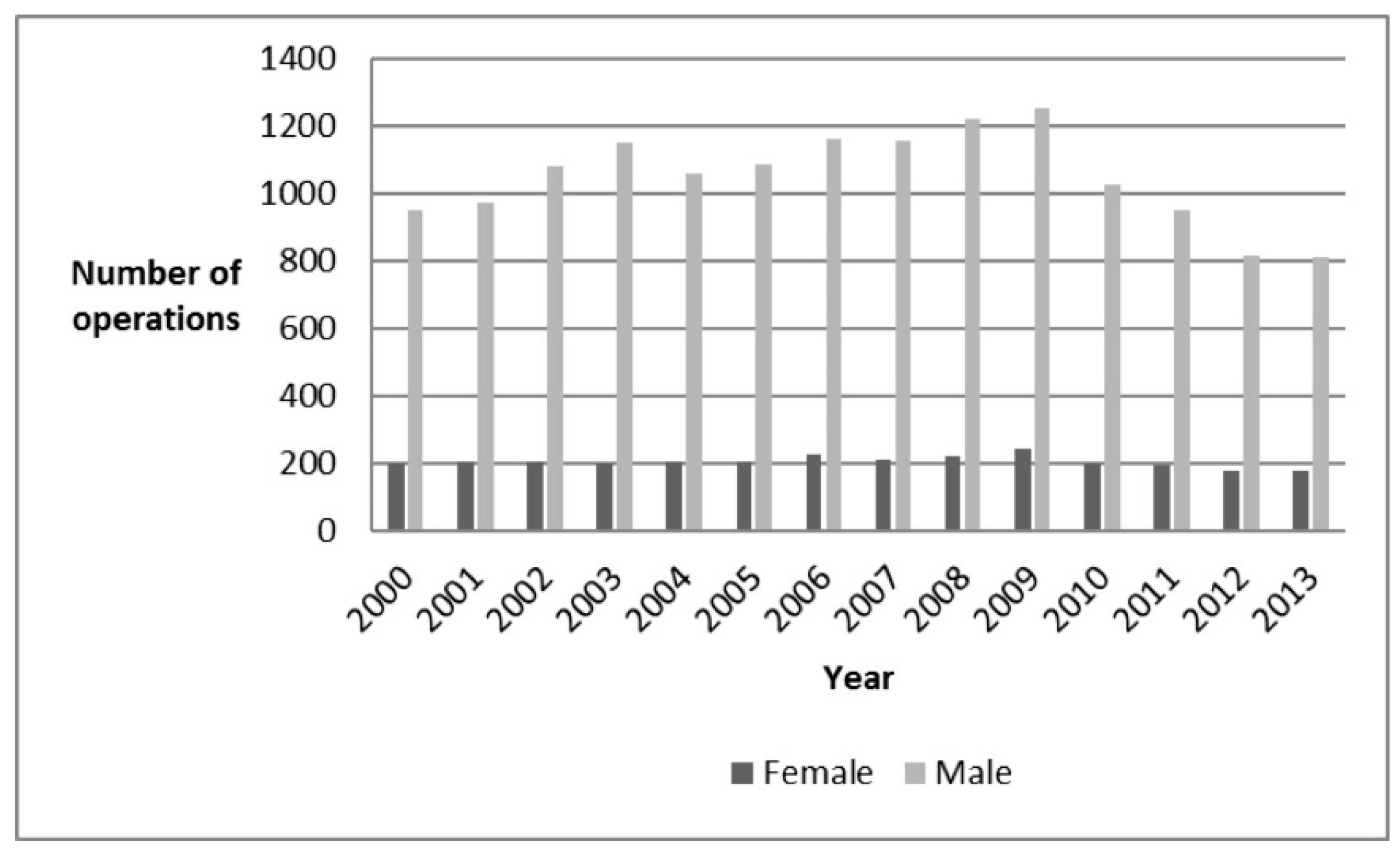
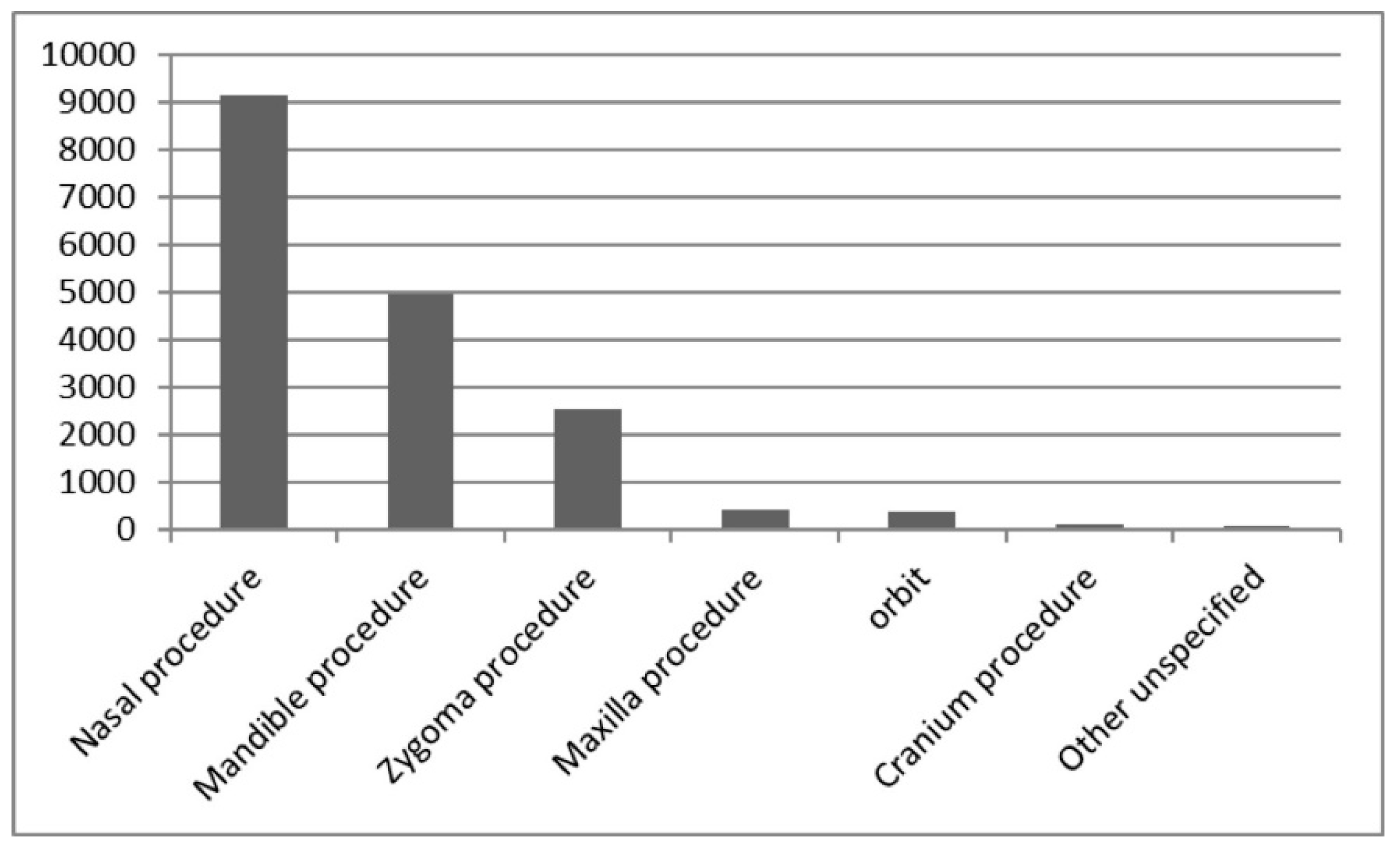
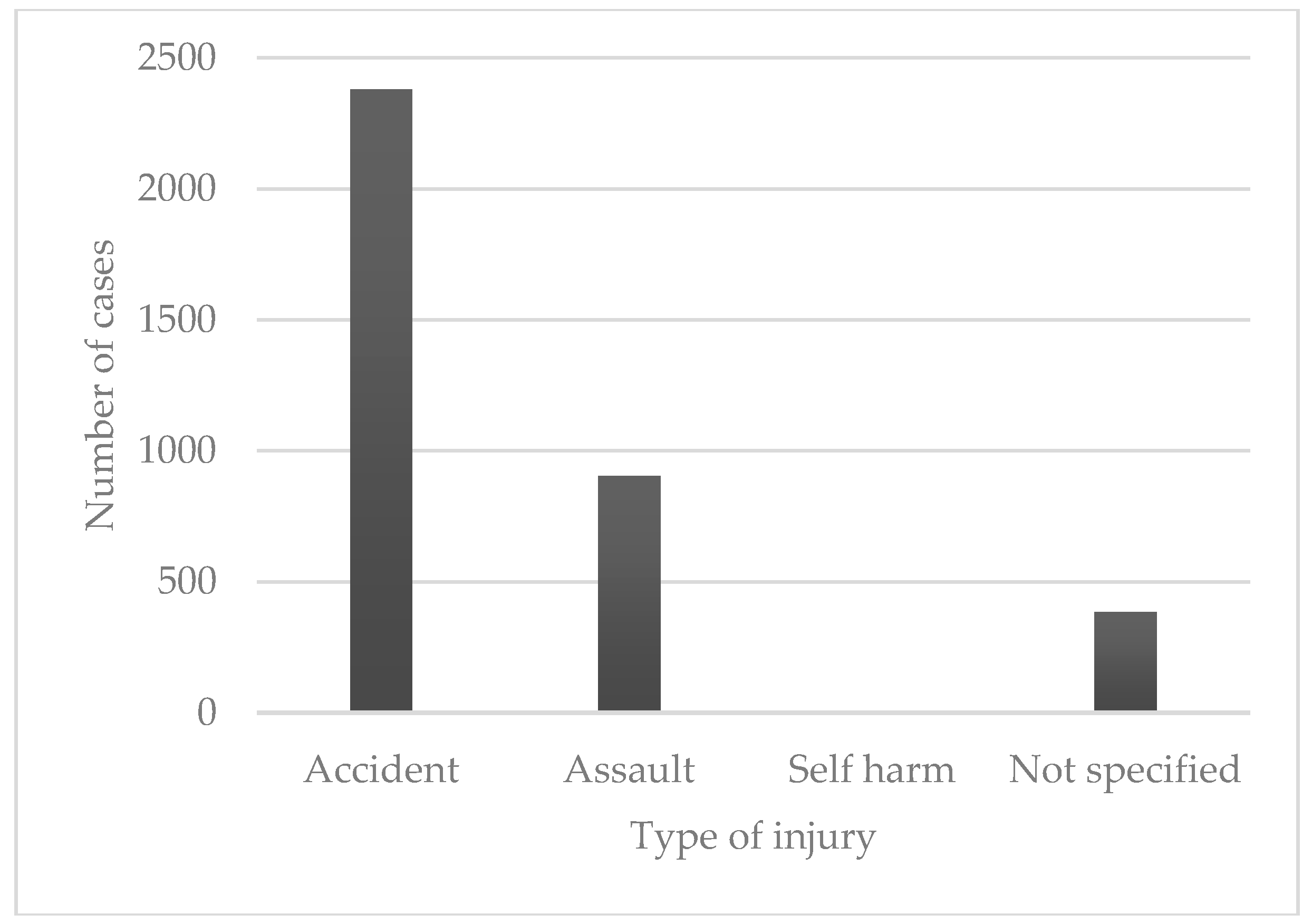
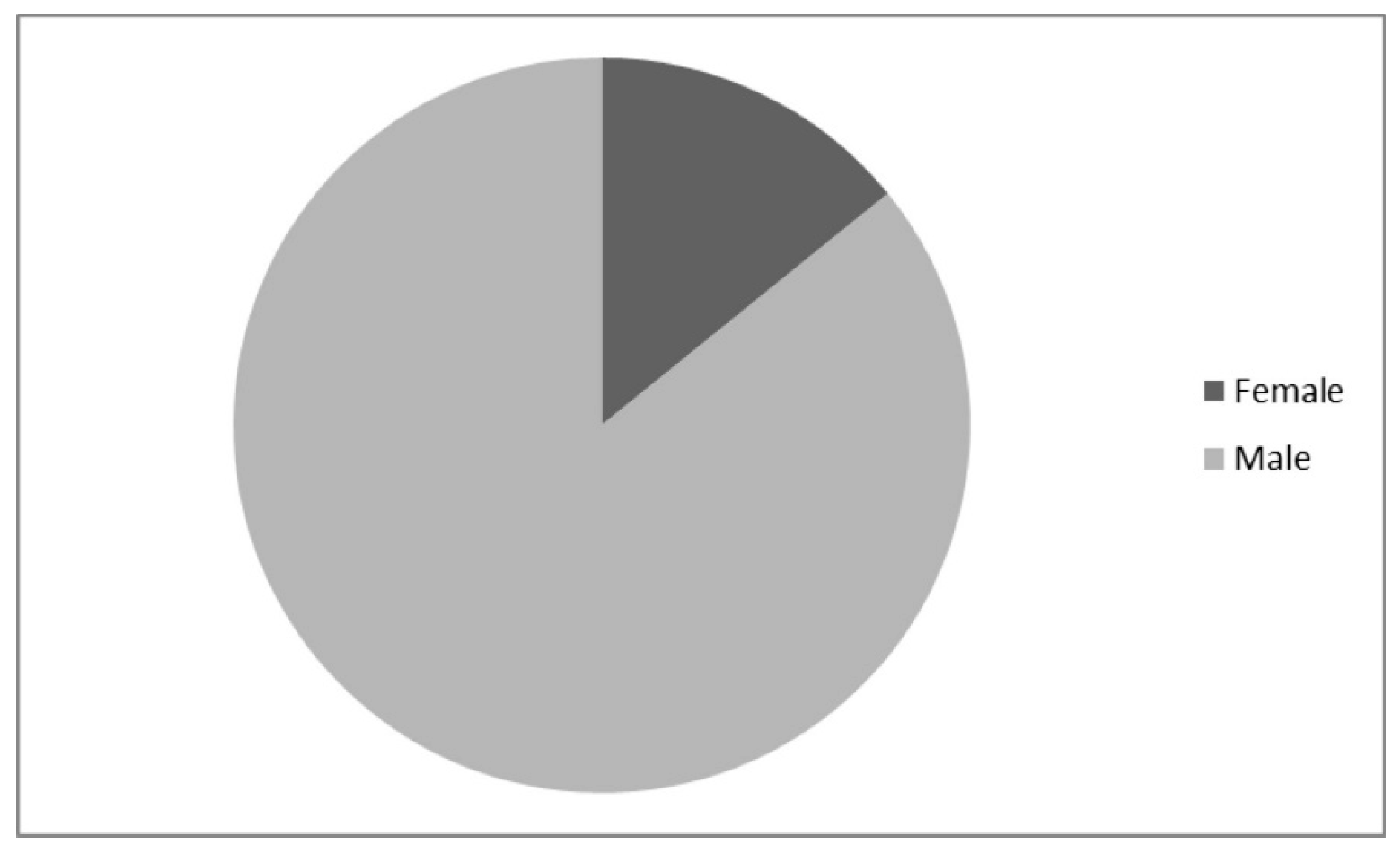
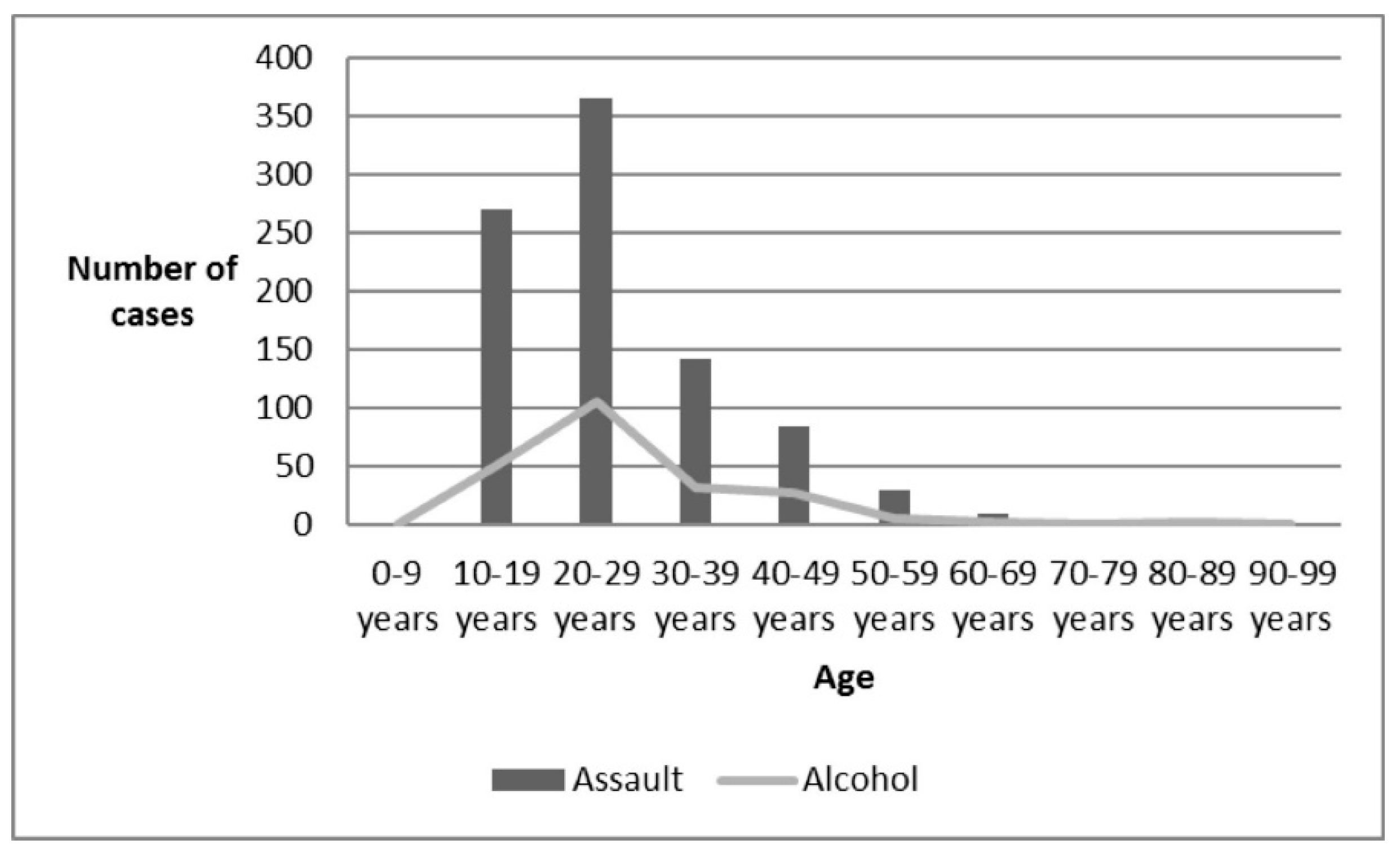
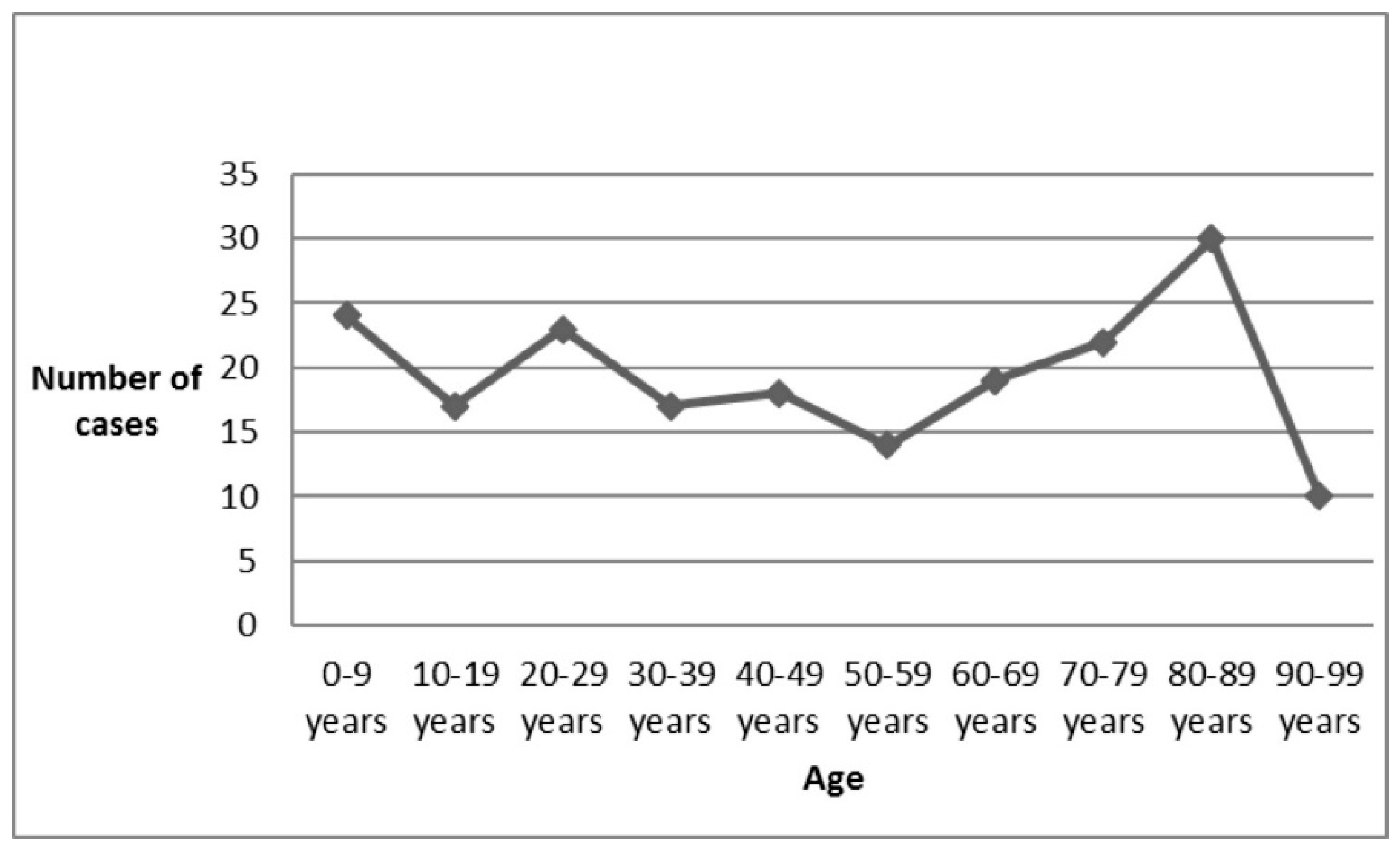
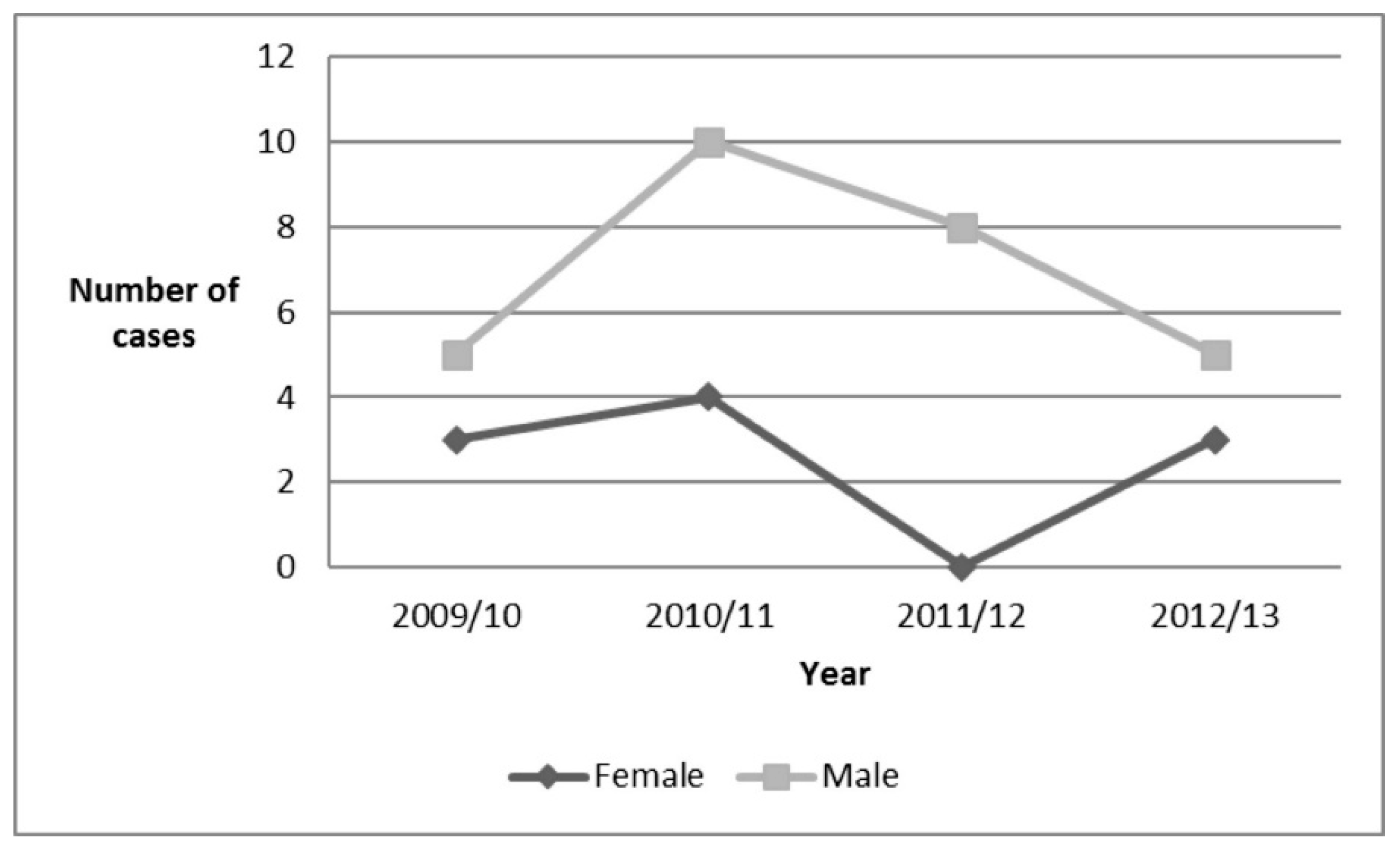
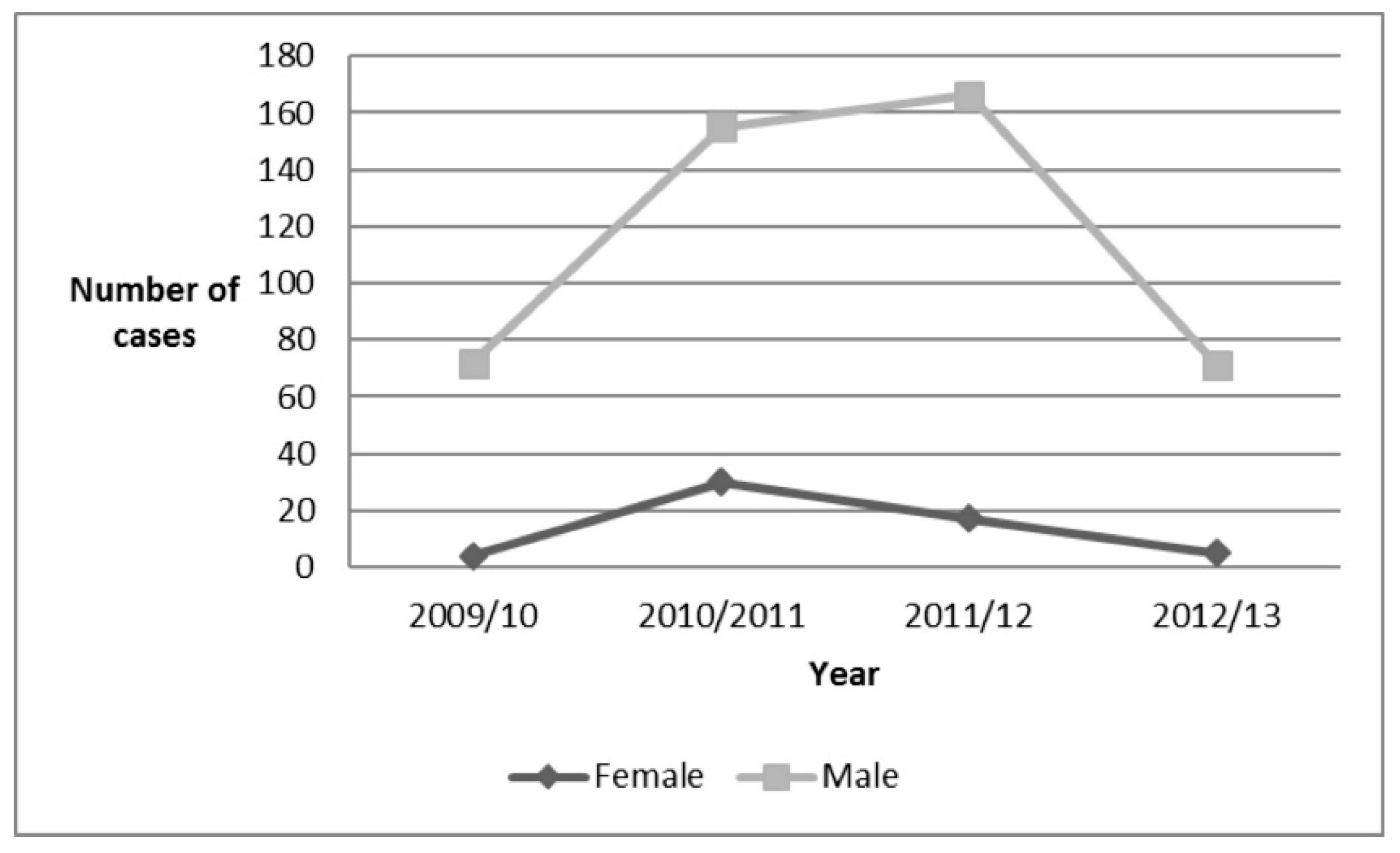
© 2018 by the authors. Licensee MDPI, Basel, Switzerland. This article is an open access article distributed under the terms and conditions of the Creative Commons Attribution (CC BY) license (http://creativecommons.org/licenses/by/4.0/).
Share and Cite
George, J.; Brahmabhatt, P.; Farboud, A.; Marnane, C. A Retrospective Review of Facial Fractures in Wales. Reports 2018, 1, 24. https://doi.org/10.3390/reports1030024
George J, Brahmabhatt P, Farboud A, Marnane C. A Retrospective Review of Facial Fractures in Wales. Reports. 2018; 1(3):24. https://doi.org/10.3390/reports1030024
Chicago/Turabian StyleGeorge, Jayan, Pranter Brahmabhatt, Amir Farboud, and Conor Marnane. 2018. "A Retrospective Review of Facial Fractures in Wales" Reports 1, no. 3: 24. https://doi.org/10.3390/reports1030024
APA StyleGeorge, J., Brahmabhatt, P., Farboud, A., & Marnane, C. (2018). A Retrospective Review of Facial Fractures in Wales. Reports, 1(3), 24. https://doi.org/10.3390/reports1030024




